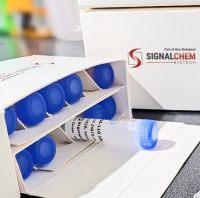Regulation of protein degradation is an important mechanism by which concentrations of proteins is controlled in cells. In addition to proteins involved in cell cycle regulation or mitosis, protein levels of many transcription factors are regulated by targeted proteosomal degradation. Regulation of protein degradation and stability is usually linked to post-translational modification of the target protein by phosphorylation. The resulting phosphoaminoacid in the context of the adjacent protein sequence is then recognized by E3 ubiquitin ligase enzymes that covalently attach small ubiquitin protein to the target protein and thereby direct them to be degraded by the proteosomes. Here, we present an overview of mechanisms regulating stability of p53, c-Myc, and c-Jun transcription factors. Especially, the purpose is to highlight the role of protein phosphorylation in the regulation of stability of these transcription factors. We also present examples where phosphorylation can either enhance or inhibit protein degradation. Lastly, we discuss the common theme among p53, c-Myc, and c-Jun proteins that the N-terminal phosphorylation both increases the transactivation capacity of the protein and protects the protein from proteolytic degradation.






